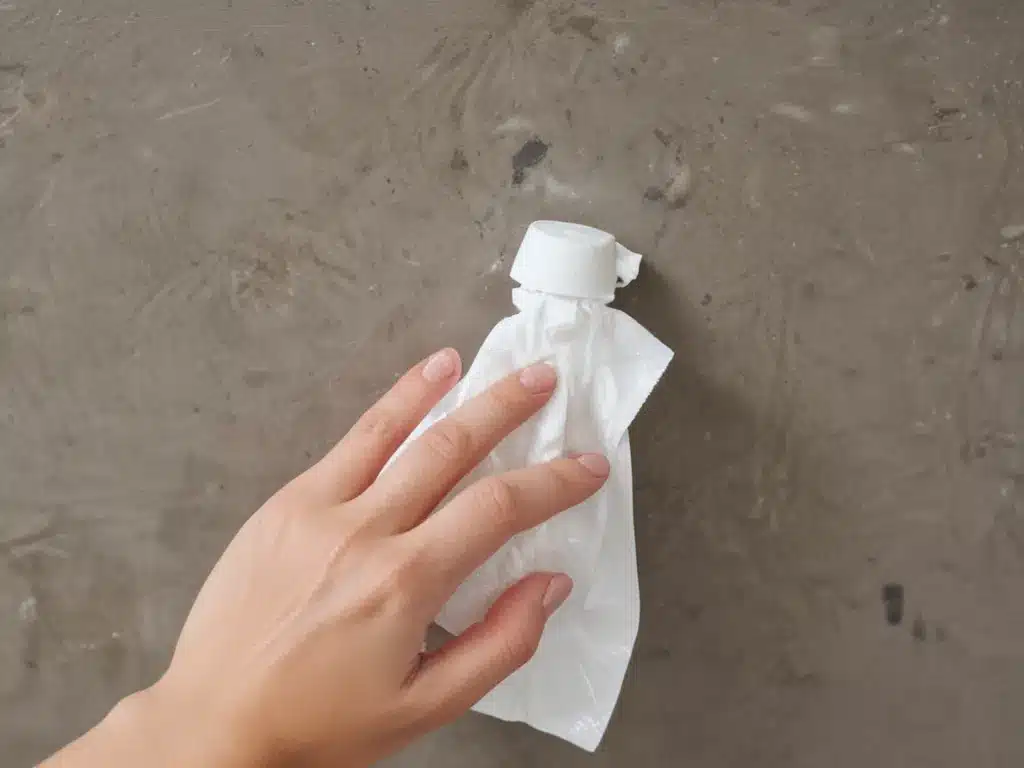We’ve all been there – you spill some soda on the counter and don’t wipe it up right away. Or your toddler decides to smear yogurt on the coffee table. Before you know it, you’ve got a sticky, gunky mess on your hands. Removing sticky residues from household surfaces can be a real pain, but with the right techniques and products, you can banish sticky gunk for good.
Why Sticky Gunk is So Hard to Remove
To understand how to get rid of sticky messes, it helps to understand what causes them in the first place. Many sticky spills contain sugars or other carbohydrates that leave behind a residue when they dry. Materials like adhesives, candle wax, and chewing gum also contain ingredients that bond tenaciously to surfaces. Additionally, sticky gunk often contains oils and fats that cling to surfaces.
When these materials dry or set on a surface, they can form a gummy film that grips tightly. Attempting to wipe the residue away with a dry cloth or sponge often just spreads it around. Water alone also fails to penetrate and dissolve sticky buildup. That’s why tackling stuck-on gunk takes a little more effort and the right techniques.
Supplies for Removing Sticky Gunk
Having the right tools and cleaners on hand goes a long way toward banishing sticky messes quickly and efficiently. Here are some supplies to have on hand:
Cleaning Solutions
-
White vinegar – The acetic acid in vinegar helps dissolve sticky sugars and carbohydrate residues. Undiluted vinegar can also help break down adhesive gunk.
-
Dish soap – Look for a degreasing formula. Dish soap helps cut through oily messes.
-
Baking soda – Functions as a gentle abrasive scrub to lift sticky films. Also neutralizes odors left behind.
-
Goo removers – Commercial sticky gunk removers contain solvents tailored to cutting through messes.
-
Rubbing alcohol – For really stubborn sticky spots, alcohol can dissolve residues.
Tools
-
Rags – Old T-shirts, towels, and microfiber cloths are perfect for wiping up sticky gunk.
-
Soft scrub brushes – Help agitate stuck-on spills and lift them from the surface.
-
Plastic scrapers – Useful for chipping off sticky material without scratching the underlying surface.
-
Steel wool – When needed for heavy gunk, fine 000 grade steel wool removes buildup without scratching.
Techniques for Removing Sticky Substances
With your supplies gathered, you’re ready to roll up your sleeves and get rid of sticky spots. Here are some of the most effective methods:
Heat and Cold
Heating or chilling a stuck-on spill can help loosen its grip on the surface below. Try these techniques:
- Run hot water over a sticky spill and let it sit to soften gunk. Then wipe with a clean cloth.
- Chill a sticky spot by putting an ice cube in a plastic bag and holding on the residue. Crack brittle gunk off after numbing it.
- For wax drips on surfaces like candleholders, apply a bag of ice to harden wax, then peel it off.
Liquid Solvents
Applying a solvent-containing liquid directly to a sticky spill often helps dissolve it so it can be wiped away. Good options include:
- White vinegar – Pour undiluted vinegar on sticky spots and let it soak in for several minutes before scrubbing.
- Rubbing alcohol – Works similarly to vinegar. Apply and let alcohol penetrate residue before wiping.
- Commercial gunk removers – Spray or gel formula removers directly on sticky messes according to package directions. Let them work before scrubbing.
Scrubbing
For especially stubborn sticky spots, agitate them with a scrubbing motion after applying a solvent. Here are scrubbing techniques that work:
- Make a baking soda paste with a bit of water. Spread paste on gunk and scrub with a soft brush or cloth. Rinse.
- Sprinkle baking soda directly on a wet sticky spot. Scrub the area with a damp brush or sponge.
- Use a plastic scraper to chip off any softened gunk after applying a solvent.
- Rub gentle steel wool over wax residue after hardening with ice to remove it.
Adhesives and Gum
For sticky substances like adhesive, chewing gum, or candle wax, try these techniques after applying solvents:
- Freeze gum or wax to harden, then scrape off with a plastic tool.
- Peel off softened adhesives slowly using a plastic scraper or putty knife.
- Place duct tape over gum or wax. Peel tape off to pull gunk away in sheets.
Preventing Sticky Situations
The best way to avoid having to remove stubborn sticky gunk is to prevent it in the first place with these tips:
- Clean up spills ASAP before they have a chance to dry and harden.
- Rinse dishes promptly after meals so food doesn’t cake on.
- Cover surfaces like tables and counters with wipeable tablecloths or placemats.
- Avoid setting down open containers of sugary liquids that could spill.
- Seal foods like jams and syrups in containers between uses.
When to Call for Backup
For the most part,household sticky spills can be conquered with some elbow grease and the right cleaners. But if you are dealing with extensive sticky buildup or residue on porous, delicate or electronic surfaces, call in a professional cleaning service. They have industrial-strength solvents and techniques to remove gunk without damaging the underlying material.
With this guide’s tips and tricks, you can win the battle against sticky spots and keep your surfaces gunk-free. A little scrubbing now prevents grimy buildup later. Next time a sticky mess occurs, you’ll be ready to bid it good riddance!







